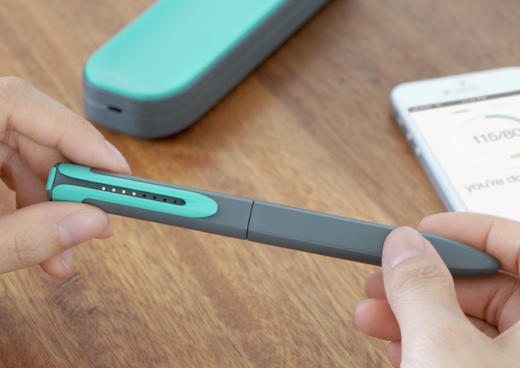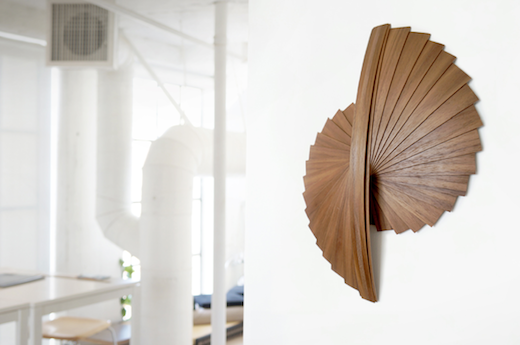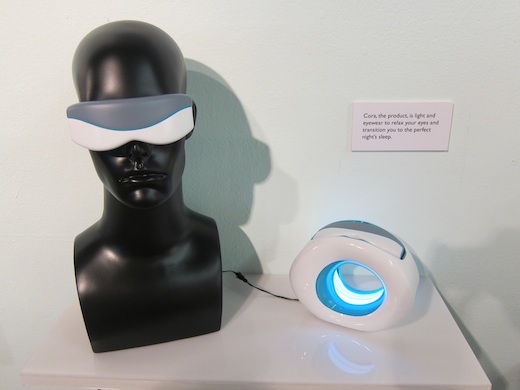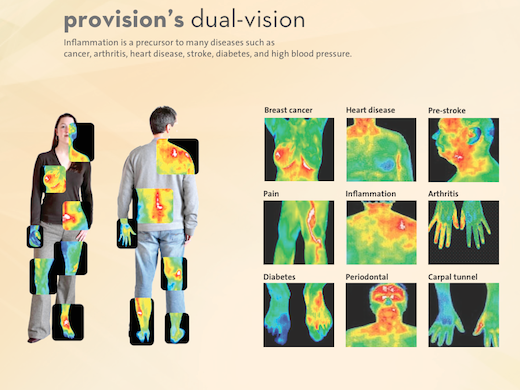
The Rytm student project tackles the “silent killer” of hypertension.
If you’ve ever watched Star Trek, even casually, chances are you’ve seen Captain Kirk, Mr. Spock or Dr. McCoy use a tricorder, a hand-held device capable of detecting everything from an object’s chemical composition to an individual’s vital signs (“He’s dead, Jim.”).
Thanks to the tricorder, the concept of a hand-held non-invasive device that can diagnose whether somebody is pregnant, experiencing abnormal neural activity, or countless other medical scenarios, has persisted as a dream gadget for decades.
But the powerful processing capabilities and the myriad of sensors found in today’s smartphones make a tricorder seem less the stuff of science fiction and more a very tangible, and inevitable, outcome of our current technology.
Or, at least that’s what the XPRIZE Foundation thinks.
Last year the foundation launched the $10 million Qualcomm Tricorder XPRIZE competition to challenge teams from across the globe to design a device (or suite of devices) that can both accurately diagnose a set of 15 diseases independent of a healthcare professional or facility and also provide an appealing and engaging consumer user experience.
Thousands of individuals are participating in this challenge, including 14 students in an XPRIZE sponsored project at Art Center–an activity not part of the Tricorder XPRIZE but that paralleled the main competition–co-taught this past Summer term by Brian Boyl and Jeff Higashi.
In the class, students were encouraged to design a device concept that conforms to the guidelines of the XPRIZE competition. But they were also allowed to take their creations in a different direction altogether, with the understanding that their projects could serve as design inspiration for the final teams–which XPRIZE plans to name later this month–who will be in the running to create the actual medical device. Another possible outcome is that students from this class could join a like-minded team in the competition.
Continue past the break to see some of the projects the students created.

Rytm includes a wooden sculpture that changes based on a user’s blood pressure.
The team composed of Product Design students Kimberly Chow, Kenneth Tay and Sherry Chen addressed the “silent killer” of hypertension with their project Rytm. ”Through our research, we found that working professionals want to be able to measure their blood pressure at work, but these devices are cumbersome to use, look really cold and carry a certain stigma,” said Kenneth Tay during his group’s presentation.
Their soution? Eliminate entirely the usual pressure cuffs found in today’s monitoring devices and replace them with the emerging technology of piezoresistive fibers, which can measure your blood pressure through wrist contact. Rytm conceals such fibers in an attractive pen, which can easily blend into any office environment and allow the user to discreetly monitor their blood pressure anytime and anywhere.
The pen is outfitted with a series of LED lights that communicate to the user whether his blood pressure is elevated. It then sends this data wirelessly to the cloud where it can both interact with a smartphone app–which tracks blood pressure and leads the user through relaxation-inducing rhythmic breathing exercises–and an analog data display, a gorgeous wooden sculptural piece that alerts family members back at home to their loved one’s hypertension status.
“One thing that’s hard to tackle as a designer, and that you [the Rytm team] have tackled here, are the sociological implications of the thing you’re creating,” said Graphic Design alumnus Mark Winter at the class final.
Winter is a senior director of Prize Operations at X-PRIZE and the man who approached Art Center with the idea of engaging its students in the global Tricorder competition. “The notion of a feedback loop that actually informs family members that dad is not feeling good and that maybe we should give him a break when he gets home? I love it,” he continued. “It’s a beautiful idea that behavioral change can be formed through the experience of a product.”

Cora combines chromatherapy with retinal scanning technology.
The team of students Rachel Goldinger (Graphic Design), Andrew Cooper (Graduate Industrial Design) and Christina Hsu (Product Design) created Cora, a device that performs the double duty of helping users reduce stress and sleep better by creating an immersive chromatherapy (color therapy) nighttime ritual via a pair of video-equipped goggles. The Trojan Horse aspect of this project is that Cora simultaneously captures the user’s retinal scans which contain information that, over time, can help doctors diagnose a number of issues related to the vascular, nervous and immune systems.
One trend the Cora group explored was the concept of the empowered patient. “Because patients use the Internet and social media as medical resources, they know more about their diseases than ever before,” said Cooper during the group’s final presentation. “Treatments have become more of a dialogue than an actual prescription.”
An insight the group reached early on also helped inform the “behind-the-curtain” functionality of the device–people feel powerless when they see something negative and which they can’t act upon immediately. “People do not actually want to look at their retinal scans,” said Goldinger, of why they shifted the consumer motivation of using Cora from a strictly medical diagnostic tool to a product that promotes healthy habits and well-being. “People want to be given information as it becomes relevant to them.”
Dr. Erik Viirre, an adjunct professor in the UCSD Departments of Neurosciences, Surgery and Cognitive Science and the Technical and Medical Director for the Qualcomm Tricorder XPRIZE agrees. ”The best part of this project is that it encourages people–through gentle, soothing reminders–to use this device and then it serially captures data over several months,” said Viirre at the class final. “That’s where the medical information from the retinal scans is going to come. It’s going to be visible in small changes that the scans will pick up over months. That’s the real value.”

Provision attaches to your smartphone and uses an infrared camera to diagnose a number of diseases.
Other class projects included Product Design students Joey Cheng’s and Albert King’s Provision, a smartphone accessory and ecosystem that included an infrared camera that could be used to diagnose a number of diseases; Product Design students Min Joong Kim’s and Mei-Ker Lai’s Loop, a suite of products focused on monitoring glucose levels and delivering insulin to Type 1 diabetic athletes; and Product Design students Alain Tsai’s and Diane Chiang’s My Little Angel, a series of devices for first-time parents that monitors and delivers information on their newborns.
“My students have heard me say over and over again what a great opportunity this space of wearable technology presents,” said Product Design Chair Karen Hofmann at the XPRIZE final, after announcing that her department had recently received a grant from the National Collegiate Inventors and Innovation Association to create some prototypes in the arena of “the quantifiable self” consumer products. “As designers, we have an ability to leverage technology to improve our lives, whether it be athletic performance, diet, exercise, or even sleeping.”








